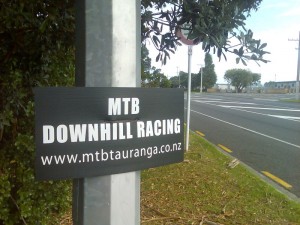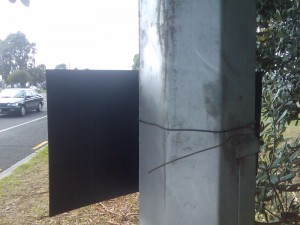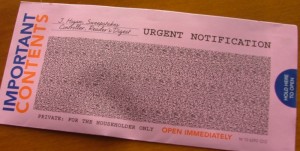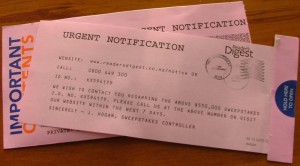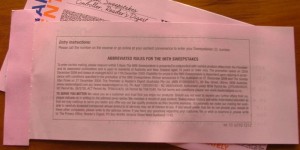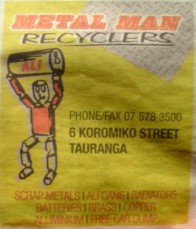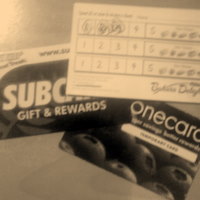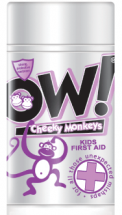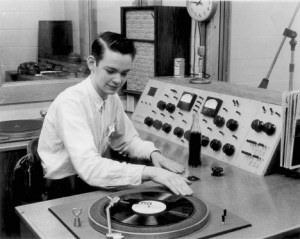
Very soon I will share with you 4 tips on how to write a radio ad that actually works. But first, I want you to think about radio advertising from your point of view as a member of the audience.
Q: Why do you listen to the radio?
- Music?
- Witty Commentary?
- Advertising?
- Because you like hearing the same weather report and news headlines every 15 minutes?
Q: Where are you when you listen to the radio?
- In the car?
- On your morning run or bike ride?
- In the office?
- On the toilet?
Q: What do you do when the ads come on?
- Change the radio station?
- “Zone out” while you wait for the music or chat to start again?
- Listen carefully for the latest sales and bargains?
You can see that there are a million potential distractions that can prevent your advertising message getting through to your radio audience.
And radio is a mass-media form of advertising after-all, so there is a huge amount of wastage (I hate wastage!).
Your potential audience could be 10,000 people, but how many of those people are:
- Listening attentively…
- at that precise moment in time…
- that need what you are selling…
- and are motivated enough to take action?
Probably none.
If you ask a radio advertising sales person what it takes to generate business for you using radio advertising, they will tell you there are 2 things you need:
- High repetition/frequency
- Say your brand name heaps
That is complete bullocks!
They say “repetition” because they want you to buy more ads.
They say “brand name” because that’s what your boss is more likely to approve the ad because he loves to hear his brand name again and again.
As you can probably tell by now, I am not a fan of radio advertising and haven’t recommended it to any of my clients for years. I’ve tried it several times, but it didn’t generate any results.
And if you’re not getting results from your advertising (or you don’t know how to measure them), then what’s the point? You might as well flush your advertising dollars down the toilet!
But this morning, whilst running, I heard a radio ad that had all the elements of success going for it.
If any radio ad can be successful I think this is it
I make that assessment on the basis that I heard it once and I remembered several key facts about it.
Try it yourself. Listen to the following mp3 once, and then I’ll test you on what you remember:
Possibly the most effective radio ad ever created (514Kb .mp3)
…
Have you listened to the ad yet? You have? Great! Now, can you answer these questions after listening to the ad just once?
- What is his name?
- What is he offering?
- How does he distinguish himself from the competition?
- What should you do next if you want to contact him or find out more?
I wouldn’t be surprised if you can answer all these questions.
Do you realise how amazing that is? After a single exposure?
So what can we learn from this?
What do you have to do to write a radio ad like this that at least has a chance at generating results for you?
Here is your lesson for the day:
4 Essential Components of a Radio Ad
1. Target your audience with your opening sentence
The opening sentence is exactly like a headline in a newspaper. If you don’t like the headline you don’t read the article. It’s the same with radio ads. If the opening sentence doesn’t speak to you, you “zone out” and don’t listen to the rest of the ad. At first, you might think that’s bad, but that’s great! It means you speaking to your target audience directly, and people who aren’t interested are being filtered out.
2. Use the word “you” through-out your ad
This is just like speed dating. You only have 30 seconds, so do you talk about yourself or do you talk about them?
You talk about them of course!
Don’t make the mistake of talking about you and your business “we do this, and we do that”. Borrrr-ring!
What do people care about more: themselves or what you are trying to sell them?
Themselves!
So talk about the listener, what they want, what they need, and use “you” and “your” constantly.
3. Distinguish yourself with a single fact
You’ve only got time to state 1 fact.
The amazing thing about this is that is the fact doesn’t have to be overly impressive, it just has to be distinctive.
In this example, Aaron said he was “one of NZ’s youngest celebrants”. Amazing? No. Distinctive? Yes!
4. Make the call to action a website address
The #1 most common mistake in radio ads is stating a phone number as the call-to-action.
Phone numbers are too hard to remember! (Even word numbers eg 0800 CALL ME NOW). They might rattle around in your brain for a few seconds, but you know that by the time you find a piece of paper and a pen (or your cellphone), they will be gone. So you don’t bother.
A website address works because is probably uses the same brand name that was mentioned in the ad with a “.co.nz” on the end of it. Easy to remember. Easy for your audience to type in when they next get to a computer (or remember days or weeks later!)
Need More Help? Need to Generate Better Results From Your Advertising?
If you have a small-medium sized business in Tauranga, then I can help you with your marketing and advertising.
I hate wastage, so I’ll choose mediums that work, I’ll measure the results, and I’ll make you truck loads of cash.
Call me now on (07) 575 8799 or email me for your FREE 45 minute Marketing and Advertising Review.
 There’s an ad playing on the radio at the moment about a local skin cancer specialist.
There’s an ad playing on the radio at the moment about a local skin cancer specialist.

